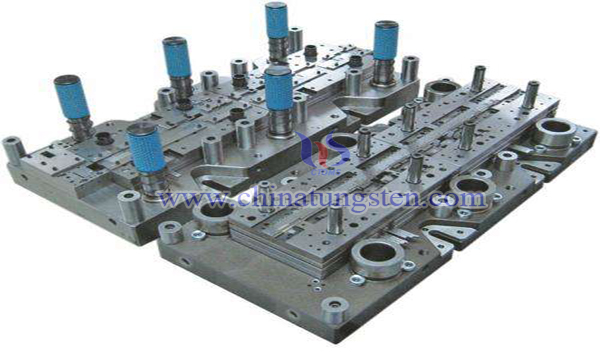Tungsten Carbide-based Multi-component Nanocomposite Ceramic Mould
- Details
- Category: Tungsten Information
- Published on Sunday, 19 May 2019 21:53
Ceramic cutting tools have high hardness and wear resistance, and show excellent cutting performance in high-speed cutting and dry cutting. They are a kind of tool materials with great development prospects. Ceramic materials have excellent thermal stability and wear resistance. They are ideal materials for manufacturing forming dies. They have great development prospects, but their toughness is very poor, so they have not been widely used in the die industry.

Recently, based on tungsten carbide, some scholars have prepared a tungsten carbide-based multi-component Nanocomposite Ceramic die. The die has strong anti-aging and defect resistance, good comprehensive mechanical properties and excellent anti-friction and wear resistance. The preparation process includes:
Step 1: According to the weight of raw materials: 60-80 parts of tungsten carbide, 10-20 parts of zirconia, 15-25 parts of titanium nitride, 2-6 parts of manganese oxide, 4-8 parts of neodymium oxide, 2-4 parts of chromium, 1-3 parts of manganese; all raw materials are nanometer powder.
Step 2: Tungsten carbide, zirconia and titanium nitride were added to the mixture of anhydrous ethanol and polyethylene glycol, then fully stirred, and ultrasonic dispersed for 20-30 minutes to obtain the first suspension.
Step 3: Manganese oxide, neodymium oxide, chromium and manganese were added to the mixed solution of anhydrous ethanol and polyethylene glycol, then fully stirred, and ultrasonic dispersed for 20-30 minutes to obtain the second suspension.
Step 4: Mix the first suspension with the second suspension, then mix it fully, and disperse it by ultrasound for 10 - 20 minutes to get the total suspension.
Step 5: Put the suspension of the total mixture into the ball mill tank, use inert gas as protective atmosphere, absolute ethanol as medium, iron ball with diameter of 1-2 mm as grinding ball, under the microwave environment of 2450 MHz, the grinding fluid is filtered for 12-24 hours, and the ratio of the total weight of all raw materials to the weight of grinding ball is 1:10-20;
Step 6: The grinding fluid is vacuum dried at 110 - 120 ℃. After complete drying, the grinding fluid is screened in the inert gas flow to obtain the mixed powder, which is sealed for reserve.
Step 7: Sintering by hot pressing method, the mixed powder obtained in step 6 is formed by pressing and sintering in a hot pressing furnace.
The results show that, compared with the other ceramic die materials mentioned in this paper, the WC-based multi-component nanocomposite ceramic die materials have better comprehensive mechanical properties and excellent friction and wear resistance, which can be used to make extrusion dies, drawing dies and cutting tools.
- Tungsten Carbide Manufacturer & Supplier, Chinatungsten Online: tungsten-carbide.com.cn
- Tungsten News & Prices of China Tungsten Industry Association: www.ctia.com.cn
- Molybdenum News & Price: news.molybdenum.com.cn
- Tel.: 86 592 5129696; Fax: 86 592 5129797; Email: sales@chinatungsten.com



 sales@chinatungsten.com
sales@chinatungsten.com